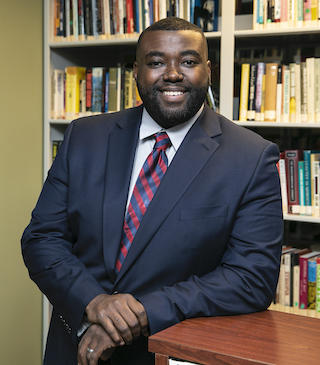In This Story
Students and researchers at George Mason University’s John Mitchell, Jr. Program (JMJP) are working hard to create a digital museum that sheds light on civil rights pioneers with largely untold stories.
Thanks to an $8,000 grant from Virginia Humanities, the team is building a digital exhibit on the life of anti-lynching advocate John Mitchell, Jr., and his colleagues Frederick Douglass and Ida B. Wells. The grant is part of $181,500 in funding awarded to 25 nonprofits.
“As a conflict resolution school, we believe there’s so much power in history and understanding leaders like Mitchell, as we look to deal with and engage with the modern-day issues we’re facing around race,” said Carter School professor Charles Chavis.
Mitchell, among other leaders, laid the foundation for the transformational work in the 1950s and ‘60s around civil rights, Chavis said. The Mitchell Program’s namesake was a prominent anti-lynching advocate, journalist, newspaper owner, and teacher.
The exhibit also highlights international impact, said Carter School PhD student Ajanet Rountree, as these leaders extended their anti-lynching advocacy abroad.
The grant will allow the team, which also includes Mason PhD student Laura Brannan, who is studying history, and American University master’s student Jack Del Nunzio, to consult with leading historians on the exhibit, and gather oral narratives from living descendants of Mitchell. The exhibit will go live on the JMJP website in Fall 2021, and they have partnered with TheirStory to produce 50 oral histories.
“These are strategically silenced narratives, so the source materials we’re relying on are seeking to dismantle some of the silences,” Del Nunzio said, adding that in addition to oral histories, they’re sourcing political cartoons, Black newspapers, written correspondences, and more.
“I’m incredibly humbled to help support this initiative,” said Kimberly Wilson, the great-great niece of Mitchell and chief human resource officer for the Virginia Museum of Fine Arts.
“I hope people take away that [Mitchell] was a man who gave everything to people, and really wanted to make a difference for everyone,” she said. “I’m hoping it will inspire conversation about his work and how it applies today, and that [JMJP] will help students learn how to use their voice to be advocates and allies, but also to set policies.”
Brannan, who is helping upload and contextualize exhibit materials, said connecting history to the present is of critical importance for inspiring change. The exhibit will also serve as a powerful tool for educators across the country.
“This work honors those who were doing peacebuilding because they were trying to survive and because they believed in the American Dream in spite of it,” Chavis said. “Their sacrifice has to be honored and studied.”



